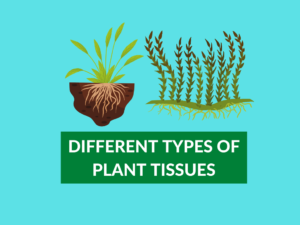The Difference Between Totipotent Cells and Pluripotent Cells
Introduction: Cells are the building blocks of life and play a crucial role in the development and functioning of organisms. Among different types of cells, totipotent cells and pluripotent cells are two of the most fascinating and significant ones. In this article, we will delve into the characteristics, examples, and uses of both totipotent and pluripotent cells. Additionally, we will provide a comprehensive comparison between these two cell types to highlight their differences.
What is a Totipotent Cell?
Totipotent cells are considered the most versatile and potent type of stem cells. These cells have the remarkable ability to differentiate into any cell type in an organism, including both embryonic and extra-embryonic cells. They are capable of giving rise to an entire organism, as well as the placenta and other supporting structures necessary for embryonic development.
Examples of Totipotent Cells:
The two main examples of totipotent cells are the zygote formed after fertilization and the cells of the early blastocyst. The zygote is the first cell formed when sperm fertilizes an egg. Meanwhile, the cells of the early blastocyst are found just a few days after fertilization, during the early stages of embryonic development.
Uses of Totipotent Cells:
Totipotent cells have immense potential in the field of regenerative medicine and developmental biology. They can be used for various purposes, including:
- Embryo development and reproduction studies
- In vitro fertilization (IVF) procedures
- Tissue and organ regeneration
- Generation of induced pluripotent stem cells (iPSCs)
What is a Pluripotent Cell?
Pluripotent cells, like totipotent cells, are capable of differentiating into various cell types. However, they are unable to give rise to extra-embryonic cells, such as those of the placenta. Unlike totipotent cells, which can develop into an entire organism, pluripotent cells can only form tissues and organs.
Examples of Pluripotent Cells:
The most well-known example of pluripotent cells is embryonic stem cells (ESCs). These cells are derived from the inner cell mass of the blastocyst, which forms a few days after fertilization. Additionally, induced pluripotent stem cells (iPSCs) are another example of pluripotent cells. iPSCs are adult cells that have been reprogrammed to exhibit pluripotent characteristics.
Uses of Pluripotent Cells:
Pluripotent cells have revolutionized the field of regenerative medicine and have numerous applications, such as:
- Tissue engineering and repair
- Drug discovery and toxicity testing
- Studying development and disease mechanisms
- Cell replacement therapies
Differences Between Totipotent Cells and Pluripotent Cells:
| Difference Area | Totipotent Cells | Pluripotent Cells |
|---|---|---|
| Developmental Potential | Can give rise to both embryonic and extra-embryonic cells | Can only differentiate into tissues and organs |
| Origin | Formed from the fusion of sperm and egg | Derived from the inner cell mass of the blastocyst |
| Stage | Only present at the very beginning of embryonic development | Formed a few days after fertilization during the blastocyst stage |
| Ability to Form an Entire Organism | Capable of giving rise to an entire organism | Cannot form an entire organism |
| Presence in Adults | Not found in adult organisms | Not naturally present in adult organisms, but can be generated through reprogramming of adult cells |
| Pluripotent Derivation | Cannot be derived from pluripotent cells | Can be derived from totipotent cells through specific conditions and cellular reprogramming |
| Research Applications | Used in embryo development studies and in vitro fertilization procedures | Used for tissue engineering, drug discovery, and studying developmental mechanisms |
| Limited Differentiation Potential | Capable of differentiating into any cell type in an organism | Capable of differentiating into various cell types, excluding extra-embryonic cells |
| Formation Time | Formed immediately after fertilization when the zygote is formed | Formed a few days after fertilization during the blastocyst stage |
| Application in Regenerative Medicine | Potential for tissue and organ regeneration | Important for tissue engineering and cell replacement therapies |
Conclusion:
Totipotent cells and pluripotent cells are remarkable types of cells with distinct characteristics and applications. While totipotent cells have the upmost developmental potential and can give rise to all cells in an organism, pluripotent cells are limited to forming tissues and organs. Both cell types provide invaluable insights into developmental biology and have enormous potential in regenerative medicine.
People Also Ask:
Q1. Can totipotent cells be derived from pluripotent cells?
A1. No, totipotent cells cannot be derived from pluripotent cells. However, pluripotent cells can be derived from totipotent cells through specific conditions and cellular reprogramming.
Q2. Are totipotent cells present in adult organisms?
A2. No, totipotent cells are not found in adult organisms. They are only present at the very beginning of embryonic development.
Q3. Can pluripotent cells form an entire organism?
A3. No, pluripotent cells cannot form an entire organism. They can only differentiate into tissues and organs.
Q4. What is the main difference between totipotent and pluripotent cells?
A4. The main difference between totipotent and pluripotent cells lies in their developmental potential. Totipotent cells can give rise to both embryonic and extra-embryonic cells, while pluripotent cells can only differentiate into tissues and organs.
Q5. What are the common uses of pluripotent cells in research?
A5. Pluripotent cells have various research applications, including tissue engineering, drug discovery, studying developmental mechanisms, and cell replacement therapies.


